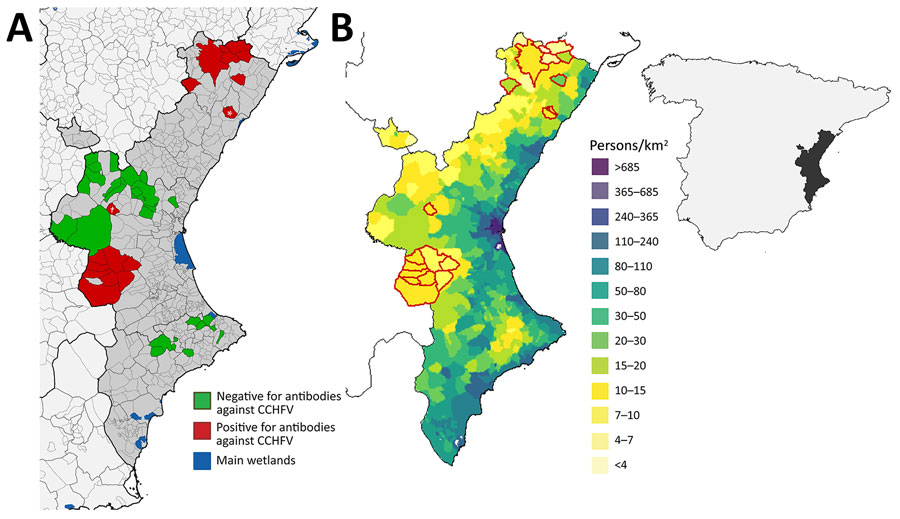Volume 28, Number 5—May 2022
Dispatch
Evidence of Prolonged Crimean-Congo Hemorrhagic Fever Virus Endemicity by Retrospective Serosurvey, Eastern Spain
Figure

Figure. Crimean-Congo hemorrhagic fever virus (CCHFV) seropositivity in Iberian ibexes (Capra pyrenaica), mouflons (Ovis aries musimon), and wild boars (Sus scrofa), Valencia region, Spain, 2010–2021. A) Areas in Valencia where tested animals were seropositive and seronegative. Green indicates all samples were seronegative; red indicates >1 sample was seropositive; gray indicates areas not sampled. Asterisk (*) indicates Chera and dagger (†) indicates Vilanova d'Alcolea, 2 areas of CCHFV-seropositivity in wild boars outside the main areas in which Iberian ibexes and mouflons tested positive. B) Density of human population, Valencia region, Spain 2015. Areas with red outlines coincide with areas in which CCHFV-seropositive animals were sampled. Map at right shows the Valencia region in Spain.
1These senior authors contributed equally to this article.